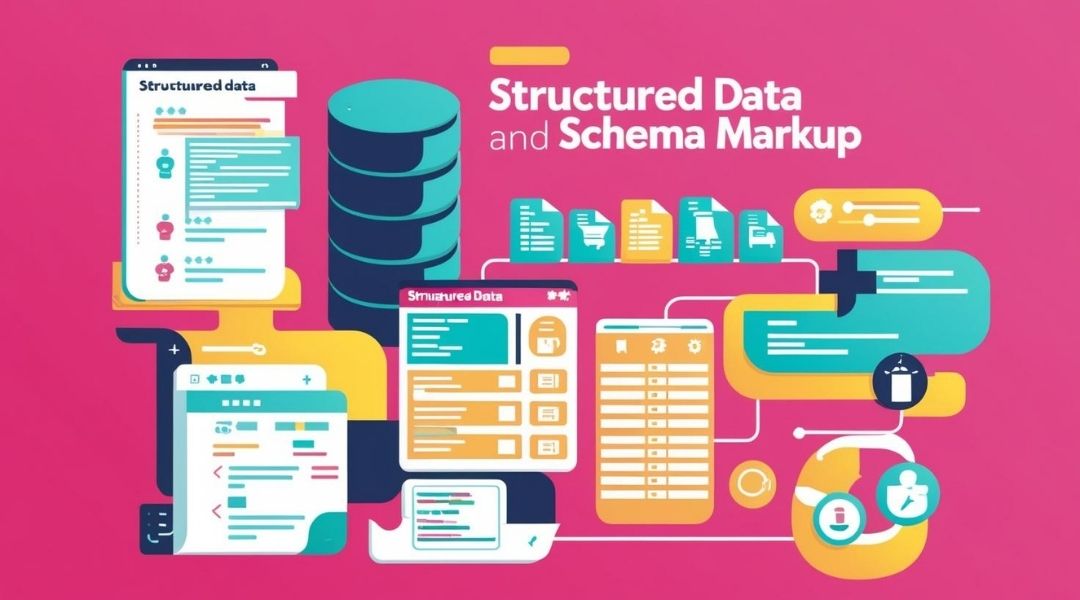Companies face questions about adapting their approach because AI-driven tools like Perplexity AI and SearchGPT go beyond traditional methods. Perplexity AI combines chat-style searching with detailed responses, while SearchGPT uses real-time data to deliver direct answers.
Conversational writing gets a great response, and structured data is a big help for getting those top search results. Matching your words to what people want helps more people see your stuff online. Multimedia elements and varied formats further strengthen reach.
Upgrades remain straightforward thanks to systems that build on Google’s familiar interface. Alignment begins with a focus on optimizing for AI-driven search results.
Optimizing for AI-Driven Search Results
You face changing experiences with search because AI-driven features handle queries in real time. These platforms synthesize details from sources. Only 16.45% of internet users have shifted to AI-based results so far.
Analysts foresee a 25% drop in traditional searches by 2026. Projected shifts favor businesses that adjust quickly to artificial intelligence queries. Insight Partners predicts a 15% to 25% dip in organic traffic.
Google Search Generative Experience, Perplexity AI, and OpenAI’s SearchGPT highlight this evolving pattern. You need consistent, targeted adjustments to maintain visibility. Craft content that meets immediate user demands and addresses follow-up queries.
Such an approach fosters relevance across platforms. Searchers crave quick answers. Staying aligned with these preferences matters for long-term success. Consider AI SEO to keep pace with future trends.
Prioritizing Conversational Content for Queries
AI systems now assess phrases, user behavior, and location with precision. You can truly thrive by shaping material for more complete requests.
- Boost Engagement: AI escalates voice searches, so text must mimic speech. You keep visitors engaged by shaping direct, speedy responses. This approach addresses how individuals now ask entire questions. It matches your structure with user phrasing for results.
- Combine Context: AI tracks search patterns and location to shape outcomes. You refine text by including user concerns within a section. This aligns content with preferences and past activity patterns. It lets you address deeper needs beyond keyword lists.
- Encourage Trust: AI highlights coverage and verified details for user trust. You strengthen credibility by presenting facts from credible sources. This approach recognizes that stuffing keywords no longer works. It keeps you aligned with how AI organizes material.
Focusing on Intent-Based Keywords Strategy
You can refine your site’s reach by matching keywords to user needs and key topics. That step often leads to better positions, more engagement, and bigger returns across unique queries.
- Sort your phrases into groups like Informational or Transactional. Each group aligns content with real needs and leads to better matches. If you match specific queries with highly relevant terms, search engines often boost your status.
- Include brand-related terms when people want a direct link to your site. A report found that 36.9% of U.S. queries focus on brand names. That level of interest can direct them straight to your page.
- Use a proven, highly trusted platform that can assign intent tags. These tools rely on AI to spot language clues. You should quickly review their suggestions for accuracy.
Enhancing Structured Data and Schema Markup
- Expand Your Markup Usage: Google uses structured data to manage geolocation features for local search and refine results. This approach clarifies product details and fosters rich snippets for more visibility. You can use tags like Article, VideoObject, Q&A, and Recipe. Your site gains better visibility through improved indexing overall.
- Validate and Update Regularly: Regular audits prevent confusion caused by outdated data and errors. You align your site with crucial device and location signals. You can use tools like Google’s Structured Data Testing Tool or checking plugins. Consistent checks maintain ongoing trust and relevance.
- Cover Sensitive and Merchant Data: You can manage privacy by properly labeling sensitive content. This fosters confidence across users and search engines. Structured data for e-commerce items supports better product listings. You stand out with transparent details.
Creating Evergreen Content with Clear Value
You keep your material relevant by focusing on lasting topics and well-researched facts. Readers return when they see specific examples and data standing solid over time. For instance, a piece that references solutions proven effective can increase traffic.
Tools such as SEO GPT can add depth by producing text in hundreds of ways. This approach helps avoid thin paragraphs and duplication, which search engines dislike. A free platform that creates content with a human-like touch also improves trust.
Evergreen content encourages more organic traffic, which boosts conversions and leads. You retain a competitive advantage with AI SEO options designed to support consistent updates. You stay on course by discussing benefits and offering reliable statistics.
Include clear, concise language that resonates with readers. You stay fully credible amid shifting search conditions.
Leveraging AI Tools to Analyze Performance
- Real-Time Metrics Tracking: AI systems show user engagement, giving direct feedback for marketers. Recent studies reveal a 60 percent jump in AI marketing adoption. You refine campaigns faster by reacting to data changes swiftly. This approach boosts your content’s success and drives higher conversions.
- Predictive Insights for Better Adjustments: AI-based predictions let you spot patterns that inform content choices. Firms with flexible capacities grow by evaluating data from various channels. You refine messages before issues grow and preserve brand credibility. These insights remove the guesswork and guide you toward profitable segments.
- Identifying Growth Opportunities and Pitfalls: AI highlights fresh market openings and flags privacy risks for your awareness. Research shows strong links between data protection efforts and consumer trust levels. You intercept misinformation by tracking suspicious activity and stopping harmful content early. These steps maintain brand stability and encourage deeper customer engagement over time.
Adapting Tone to Natural Language Processing
You adjust your writing style so users feel at ease with your message. SEO GPT uses live data to maintain clarity and precision. They help you craft content that resonates with both search engine bots and readers.
SEO GPT is free, so it’s a great choice for content personalization. It focuses on each page’s specific term and details to produce custom material. It pulls from your keyword and the page content to create relevant text.
That approach aligns with natural language processing, which detects context cues and style. Adapting your tone fosters trust and matches user expectations for a personal touch. You can stand out by integrating consistent style elements in subject lines and descriptions.
The platform is trained for web content and saves you time while boosting visibility.
Expanding Multimedia Elements like Videos or Infographics
- Audience Preferences: Some readers prefer written articles, while others watch short video bursts each day. YouTube hosts billions of users, yet new channels often take time to stand out. Assess how your audience consumes material across platforms before finalizing decisions. Choose formats that align well with their habits and boost content interaction.
- Visual Impact: Infographics break data into smaller parts that feel easier to grasp. They highlight key figures in a direct, eye-catching manner. Short videos can reinforce brand presence on popular channels. They feature real people who create stronger audience trust.
- Media Analysis: Evaluate watch time and conversions. You see which format meets goals. Set objectives before posting new content types. Track outcomes and adapt quickly.
Integrating diverse multimedia elements, such as videos and infographics, enhances content engagement and strengthens brand visibility. By aligning your strategy with audience preferences and tracking performance metrics, you can refine your approach for maximum impact.
As digital consumption habits evolve, staying adaptable ensures your content remains relevant, accessible, and highly engaging across multiple platforms.
Monitoring Trends in Generative AI Searches
Monitoring trends in generative AI queries helps track emerging opportunities and sudden shifts in search behavior. Google’s Project Astra integrates AI-driven conversations through phones and smart glasses, while Microsoft’s Bing continues its expansion through CoPilot integration. Meanwhile, ChatGPT’s new SearchGPT pulls data from Bing, signaling increased competition for audience attention.
By comparing AI referral sources, you can measure their impact, tracking whether they surpass 0.2% of visits, as recorded by OrbMedia’s AI-driven traffic analysis. Consistent monitoring allows you to identify gains or losses and make timely adjustments. A recent Seer Interactive study analyzed 70 brands mentioned in generative AI responses, revealing how these tools prioritize results based on semantic relevance rather than just keywords. Understanding these shifts helps refine your strategy for better alignment with AI search patterns.
Adapting Your Content Strategy for AI Search
As AI-driven searches evolve, small strategic updates can make a significant impact on visibility. A recent marketing survey suggests that 60% of businesses plan to make moderate adjustments to their SEO approach in response to AI-driven search changes.
Some worry that AI shifts will require constant rewrites, but small refinements often yield the best results. Consider:
- Exploring new content angles that align with AI-generated search preferences.
- Analyzing engagement metrics to identify patterns in AI-driven traffic.
- Making incremental optimizations to improve content clarity and relevance.
Simply reusing surface-level data won’t be enough. Instead, focus on presenting fresh insights, adding personality, and optimizing key takeaways to stand out. While adjusting content strategies may seem overwhelming, staying flexible ensures long-term visibility and competitiveness in an AI-first search landscape.









